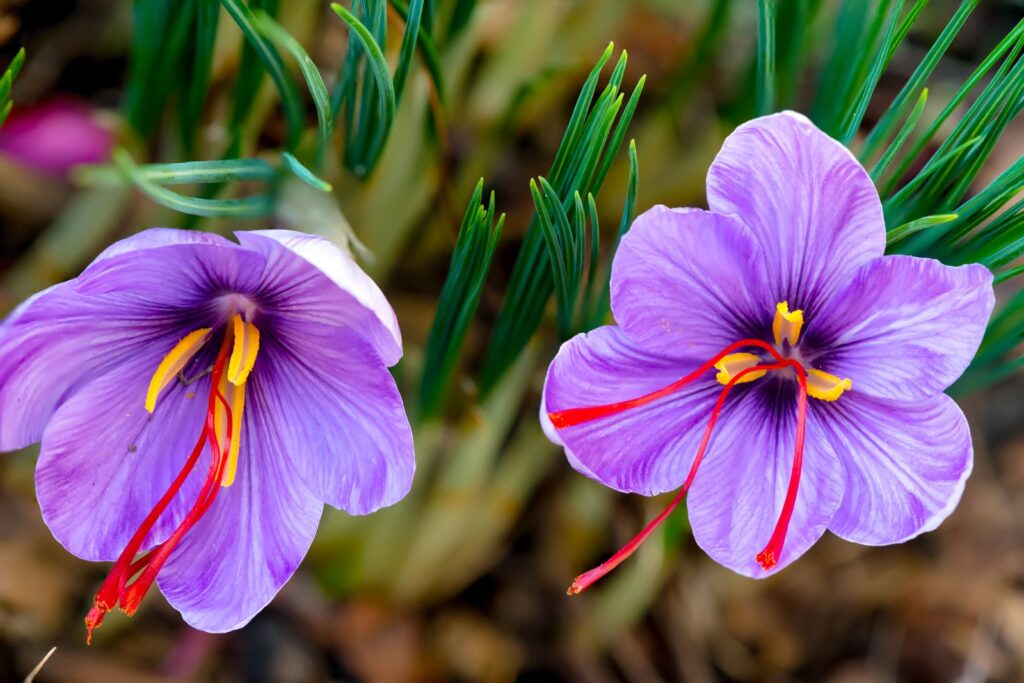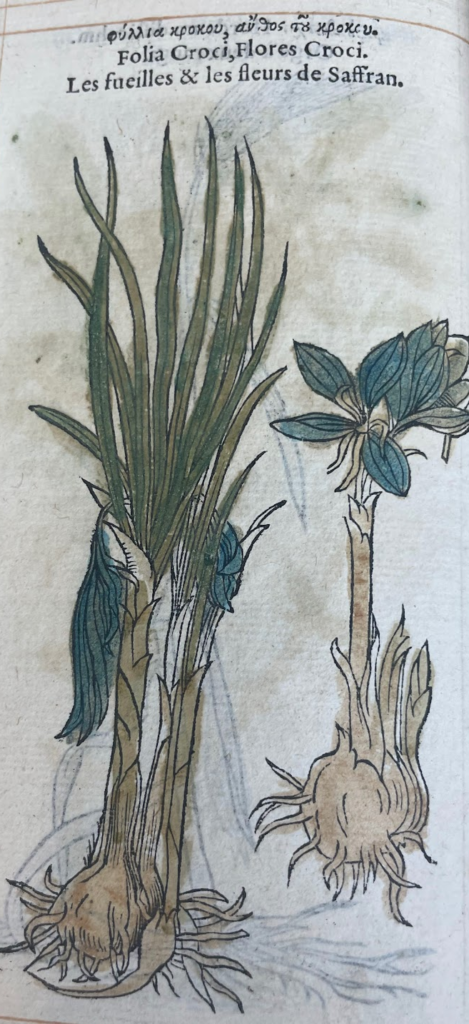Scientific Name: Crocus sativus belonging to the Iridaceae family
Origin: Middle East
Description: The flower appears in a wide range of colors based on the species but they are typically purple, white or yellow. They have three petal-like sepals and three broad stigma branches. The flower buds form a round underground storage organ for plants, corm, along with grass-like leaves. Saffron is a spice stemming from the dried golden stigma of the flower. It is costly as harvesting saffron is labor-intensive (Augustyn, 2024).
Historical Medicinal Use: Madame de Fouquet recommends putting the powdered mixture of saffron, pepper, cinnamon, cloves and ginger in a broth to make women’s periods start.
Modern Medicinal Use: Saffron is a powerful antioxidant and some research has shown that certain antioxidants, particularly crocin, can help kill cancer cells without harming the healthy cells (Chen S et. al, 2015). It is also used to improve inflammation and reduce appetite (Raman, 2023).
Chen S, et al. “Crocin Inhibits Cell Proliferation and Enhances Cisplatin and Pemetrexed Chemosensitivity in Lung Cancer Cells.” Translational Lung Cancer Research, U.S. National Library of Medicine, Dec. 2015, pubmed.ncbi.nlm.nih.gov/26798587/.
Augustyn, Adam, et al. “Crocus.” Encyclopædia Britannica, Encyclopædia Britannica, inc., 12 Apr. 2024, www.britannica.com/plant/Crocus#ref172302.
Raman, Ryan. “11 Impressive Health Benefits of Saffron.” Healthline, Healthline Media, 1 Feb. 2023, www.healthline.com/nutrition/saffron#TOC_TITLE_HDR_3.
De Fouquet, Marie. Recueil des remèdes faciles et domestiques, choisis et expérimentés, et très approuvés pour toutes sortes de maladies internes et externes, et difficiles à guerir. 1685.
Fuchs, Leonhart. Histoire des plantes. 1549.

